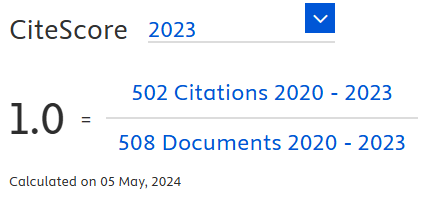Bioremediation of tannery wastewater using Tetradesmus deserticola: A sustainable approach
DOI:
https://doi.org/10.18006/2025.13(2).190.203Keywords:
Tannery wastewater, Remediation, Microalgae, T. deserticola, Gas Chromatography-Mass Spectrometry, Physicochemical analysisAbstract
This study aimed to evaluate the potential of Tetradesmus deserticola for the bioremediation of tannery wastewater (TWW), which contains both organic and inorganic pollutants that are harmful to the environment and human health if discharged untreated. The methodology involved culturing T. deserticola in different concentrations of TWW and assessing its ability to remove pollutants over 15 days. The physicochemical analysis of the treated TWW revealed significant reductions in key parameters, such as Chemical Oxygen Demand (COD) (93.6%), total nitrogen (93.3%), phosphate (79.8%), magnesium (95.9%), and heavy metals including chromium (92.9%), zinc (82.4%), and iron (63.6%). Gas chromatography-mass spectrometry (GC-MS) analysis confirmed the effective remediation of carcinogenic aromatic compounds, including benzene derivatives, and the transformation of complex steroids into less toxic metabolites. However, long-chain alkanes largely remained unaffected by the microalgal treatment. These findings suggest that T. deserticola can effectively remediate TWW, offering a promising and sustainable solution for wastewater treatment. Further optimization of treatment conditions may enhance the degradation of persistent compounds.
References
Ajayan, K. V., Selvaraju, M., Unnikannan, P., & Sruthi, P. (2015). Phycoremediation of tannery wastewater using microalgae Scenedesmus species. International Journal of Phytoremediation, 17(10), 907–916. DOI: https://doi.org/10.1080/15226514.2014.989313
Aké, A. H. J., Rochdi, N., Jemo, M., Hafidi, M., Ouhdouch, Y., & El Fels, L. (2024). Cr (VI) removal performance from wastewater by microflora isolated from tannery effluents in a semi-arid environment: A SEM, EDX, FTIR and zeta potential study. Frontiers in Microbiology, 15, 1423741. DOI: https://doi.org/10.3389/fmicb.2024.1423741
APHA (2023). American Public Health Association, American Water Works Association, & Water Environment Federation. In W. C. Lipps, E. B. Braun-Howland, & T. E. Baxter, (Eds.) Standard methods for the examination of water and wastewater 24th ed. APHA Press.
Bai, X., Pan, L., Zhao, P., Fan, D., & Li, W. (2016). A new solid acid SO₄²⁻/TiO₂ catalyst modified with tin to synthesize 1,6-hexanediol diacrylate. Chinese Journal of Catalysis, 37(9), 1469–1476. DOI: https://doi.org/10.1016/S1872-2067(16)62474-9
Balaji, S., Kalaivani, T., Shalini, M., Gopalakrishnan, M., Muhammad, M. A. R., & Rajasekaran, C. (2016). Sorption sites of microalgae possess metal binding ability towards Cr (VI) from tannery effluents—a kinetic and characterization study. Desalination and Water Treatment, 57(31), 14518–14529. DOI: https://doi.org/10.1080/19443994.2015.1064032
Bharagava, R. N., Saxena, G., Mulla, S. I., & Patel, D. K. (2018).Characterization and identification of recalcitrant organic pollutants (ROPs) in tannery wastewater and its phytotoxicity evaluation for environmental safety. Archives of Environmental Contamination and Toxicology, 75, 259–272. DOI: https://doi.org/10.1007/s00244-017-0490-x
Daneshvar, E., Zarrinmehr, M. J., Koutra, E., Kornaros, M., Farhadian, O., & Bhatnagar, A. (2019). Sequential cultivation of microalgae in raw and recycled dairy wastewater: Microalgal growth, wastewater treatment and biochemical composition. Bioresource Technology, 273, 556–564. DOI: https://doi.org/10.1016/j.biortech.2018.11.059
De Marco, E., Savarese, M., Paduano, A., & Sacchi, R. (2007). Characterization and fractionation of phenolic compounds extracted from olive oil mill wastewaters. Food Chemistry, 104(2), 858–867. DOI: https://doi.org/10.1016/j.foodchem.2006.10.005
Delidow, B. C. (1993). Molecular cloning of polymerase chain reaction fragments with cohesive ends. Methods in Molecular Biology (Clifton, NJ), 15, 217-228. DOI: https://doi.org/10.1385/0-89603-244-2:217
Devi, A., Verma, M., Saratale, G. D., Saratale, R. G., Ferreira, L. F. R., Mulla, S. I., & Bharagava, R. N. (2023). Microalgae: A green eco-friendly agent for bioremediation of tannery wastewater with simultaneous production of value-added products. Chemosphere, 336, 139192. DOI: https://doi.org/10.1016/j.chemosphere.2023.139192
Eland, L. E., Davenport, R., & Mota, C. R. (2012).Evaluation of DNA extraction methods for freshwater eukaryotic microalgae.Water Research, 46(16), 5355–5364. DOI: https://doi.org/10.1016/j.watres.2012.07.023
Fawley, M. W., & Fawley, K. P. (2020).Identification of eukaryotic microalgal strains. Journal of Applied Phycology, 32, 2699–2709. DOI: https://doi.org/10.1007/s10811-020-02190-5
Ferris, M. J., & Hirsch, C. (1991). Method for isolation and purification of cyanobacteria. Applied and Environmental Microbiology. 57(5), 1448-1452. DOI: https://doi.org/10.1128/aem.57.5.1448-1452.1991
Gajendiran, K., Ma, Y., Kandasamy, S., Sabour, A. A. A., Alshiekheid, M., Pugazhendhi, A., & Narayanan, M. (2023). Tannery wastewater remediation competence of metal tolerant bacteria and fungi under the influence of chemically modified water hyacinth biochar: An in vitro evaluation. Biomass Conversion and Biorefinery, 13, 1–11. DOI: https://doi.org/10.1007/s13399-023-05126-4
Gallet, C., & Pellissier, F. (1997). Phenolic compounds in natural solutions of a coniferous forest. Journal of Chemical Ecology, 23, 2401–2412. DOI: https://doi.org/10.1023/B:JOEC.0000006682.50061.83
Gwo, J. C., Chiu, J. Y., Chou, C. C., & Cheng, H. Y. (2005). Cryopreservation of a marine microalga, Nannochloropsis oculata (Eustigmatophyceae).Cryobiology, 50(3), 338-343. DOI: https://doi.org/10.1016/j.cryobiol.2005.02.001
Hansen, É., de Aquim, P. M., & Gutterres, M. (2021). Environmental assessment of water, chemicals and effluents in leather post-tanning process: A review. Environmental Impact Assessment Review, 89, 106597. DOI: https://doi.org/10.1016/j.eiar.2021.106597
Husain, A., Ansari, M. A., Khan, A. H., Shadan, M., & Baig, M. W. (2024). Overview of treatment methods of tannery wastewater. IOP Conference Series: Earth and Environmental Science, 1326 (1), 012134. DOI: https://doi.org/10.1088/1755-1315/1326/1/012134
Japar, A. S., Takriff, M. S., & Yasin, N. H. M. (2021).Microalgae acclimatization in industrial wastewater and its effect on growth and primary metabolite composition. Algal Research, 53, 102163. DOI: https://doi.org/10.1016/j.algal.2020.102163
Kadar, N. A., Shaleh, S. R. M., & Suali, E. (2018).Molecular and phylogenetic identification of marine microalgae inferred by 18S rDNA gene. Malaysian Applied Biology, 47(6), 41–45.
Khaw, Y. S., Khong, N. M. H., Shaharuddin, N. A., & Yusoff, F. M. (2020). A simple 18S rDNA approach for the identification of cultured eukaryotic microalgae with an emphasis on primers. Journal of Microbiological Methods, 172, 105890. DOI: https://doi.org/10.1016/j.mimet.2020.105890
Kumar, S., Yadav, A., Maurya, A., Pratap, S. G., Singh, P. K., & Raj, A. (2022). Characterization of tannery effluents by analyzing the recalcitrant organic pollutants and phytotoxicity assay. Journal of Applied Biology & Biotechnology, 10, 91–99. DOI: https://doi.org/10.7324/JABB.2022.10s210
Mahmood, S., Khalid, A., Mahmood, T., Arshad, M., Loyola-Licea, J. C., & Crowley, D. E. (2015). Biotreatment of simulated tannery wastewater containing Reactive Black 5, aniline and Cr(VI) using a biochar packed bioreactor. RSC Advances, 5(128), 106272–106279. DOI: https://doi.org/10.1039/C5RA16809K
Martin, F. N., Coffey, M. D., Zeller, K., Hamelin, R. C., Tooley, P., Garbelotto, M., & Berger, P. H. (2009). Evaluation of molecular markers for Phytophthoraramorum detection and identification: testing for specificity using a standardized library of isolates. Phytopathology, 99(4), 390-403 DOI: https://doi.org/10.1094/PHYTO-99-4-0390
Mirza, S. S., Eida, M., Jabeen, F., Iqtedar, M., Mahmood, A., Akmal, M., & Sabir, M. (2021). Biosorption of chromium from tannery effluent using carbon-activated algae granules of Chlorella vulgaris and Scenedesmus obliquus. International Journal of Environmental Science and Technology, 18(10), 3061–3070. DOI: https://doi.org/10.1007/s13762-020-03033-z
Musti, Y. A., Yaumi, A. L., Highina, B. K., & Mukhtar, F. U. (2024). Activated carbon derived from groundnut shell and rice husk for the adsorption of heavy metals in tannery wastewater. Nigerian Journal of Tropical Engineering, 18(1), 70-87. DOI: https://doi.org/10.59081/njte.18.1.007
Nagabalaji, V., Maharaja, P., Nishanthi, R., Sathish, G., Suthanthararajan, R., & Srinivasan, S. V. (2023). Effect of co-culturing bacteria and microalgae and influence of inoculum ratio during the biological treatment of tannery wastewater. Journal of Environmental Management, 341, 118008. DOI: https://doi.org/10.1016/j.jenvman.2023.118008
Nagi, M., He, M., Li, D., Gebreluel, T., Cheng, B., & Wang, C. (2020). Utilization of tannery wastewater for biofuel production: New insights on microalgae growth and biomass production. Scientific Reports, 10, 1530. DOI: https://doi.org/10.1038/s41598-019-57120-4
Onkar, S., Mohammed, A., Nida, A., & Ali, M. (2011). New antifungal aromatic compounds from the seeds of Rhus coriaria L. International Research Journal of Pharmacy, 2(1), 188–194.
Paula, E. R., Johanna, M. B., Alberto, A. B., Rubén, R. I. J., Carlos, N. J., & Jennifer, M. (2023). Isolation, identification, and evaluation of the lipid content of Desmodesmus communis from the Ecuadorian Amazon. BioEnergy Research, 16(3), 1789–1800. DOI: https://doi.org/10.1007/s12155-022-10543-w
Pena, A. C., Agustini, C. B., Trierweiler, L. F., & Gutterres, M. (2020). Influence of period light on cultivation of microalgae consortium for the treatment of tannery wastewaters from leather finishing stage. Journal of Cleaner Production, 263, 121618. DOI: https://doi.org/10.1016/j.jclepro.2020.121618
Prakash, A. J., Ragul, M., Rao, J. R., & Fathima, N. N. (2014). Cool glove leathers made using thermoresponsive syntans. Journal of the American Leather Chemists Association, 109, 411–417.
Puhazhselvan, P., Aparna, R., Ayyadurai, N., Gowthaman, M. K., Saravanan, P., & Kamini, N. R. (2017). Enzyme based cleaner process for enhanced recovery of lipids from tannery fleshing waste. Journal of Cleaner Production, 144, 187–191. DOI: https://doi.org/10.1016/j.jclepro.2016.12.148
Quevedo, M. R., González, P. S., Barroso, C. N., & Paisio, C. E. (2024). Microbe-assisted phytoremediation of domestic and tannery wastewater: In vitro application of a macrophyte mixture for contaminant removal. International Journal of Environmental Science and Technology, 21(1), 1–12.
Yadav, S., & Chandra, R. (2015). Syntrophic co-culture of Bacillus subtilis and Klebsiella pneumonia for degradation of kraft lignin discharged from rayon grade pulp industry. Journal of Environmental Sciences, 33, 229-238. DOI: https://doi.org/10.1016/j.jes.2015.01.018
Saran, C., Devi, A., Verma, M., Saratale, G. D., Ferreira, L. F. R., More, N., & Bharagava, R. N. (2024). A Continuous System of Biofuel Production from Microalgal Biomass. In N. Bharadvaja, L. Kumar, S. Pandit, S. Banerjee, & R. Anand (eds) Recent Trends and Developments in Algal Biofuels and Biorefinery (77-106). Springer, Cham. https://doi.org/10.1007/978-3-031-52319-9_4 DOI: https://doi.org/10.1007/978-3-031-52319-9_4
Saran, C., Purchase, D., Saratale, G. D., Saratale, R. G., Ferreira, L. F. R., et al. (2023). Microbial fuel cell: A green eco-friendly agent for tannery wastewater treatment and simultaneous bioelectricity/power generation. Chemosphere, 312, 137072. DOI: https://doi.org/10.1016/j.chemosphere.2022.137072
Saxena, G., Chandra, R., & Bharagava, R. N. (2017). Environmental pollution, toxicity profile and treatment approaches for tannery wastewater and its chemical pollutants. Reviews of Environmental Contamination and Toxicology, 240, 31–69. DOI: https://doi.org/10.1007/398_2015_5009
Seigler, D. S. (1998).Tannins. In D.S. Seigler (Eds.) Plant Secondary Metabolism (pp. 193–214). Springer, Boston, MA. https://doi.org/10.1007/978-1-4615-4913-0_12. DOI: https://doi.org/10.1007/978-1-4615-4913-0_12
Selvan, S. T., Chandrasekaran, R., Muthusamy, S., & Ramamurthy, D. (2023). Eco-friendly approach for tannery effluent treatment and CO2 sequestration using unicellular green oleaginous microalga Tetradesmus obliquus TS03. Environmental Science and Pollution Research, 30(16), 48138-48156. DOI: https://doi.org/10.1007/s11356-023-25703-4
Talouizte, H., Merzouki, M., Benlemlih, M., & Bendriss Amraoui, M. (2020). Chemical characterization of specific micropollutants from textile industry effluents in Fez City, Morocco. Journal of Chemistry, 2020(1), 3268241. DOI: https://doi.org/10.1155/2020/3268241
United States Environmental Protection Agency. (2012). Universe of chemicals for potential endocrine disruptor screening and testing. Retrieved from https://www.epa.gov/endocrine-disruption/universe-chemicals-potential-endocrine-disruptor-screening-and-testing.
Vyrides, I., Conteras, P. A., & Stuckey, D. C. (2010). Post-treatment of a submerged anaerobic membrane bioreactor (SAMBR) saline effluent using powdered activated carbon (PAC). Journal of Hazardous Materials, 177(1–3), 836–841. DOI: https://doi.org/10.1016/j.jhazmat.2009.12.109
Yadav, A., Raj, A., Purchase, D., Ferreira, L. F. R., Saratale, G. D., & Bharagava, R. N. (2019). Phytotoxicity, cytotoxicity and genotoxicity evaluation of organic and inorganic pollutants rich tannery wastewater from a Common Effluent Treatment Plant (CETP) in Unnao district, India using Vigna radiata and Allium cepa. Chemosphere, 224, 324–332. DOI: https://doi.org/10.1016/j.chemosphere.2019.02.124
Zhang, Y., Ren, L., Chu, H., Zhou, X., Yao, T., & Zhang, Y. (2019). Optimization for Scenedesmus obliquus cultivation: The effects of temperature, light intensity and pH on growth and biochemical composition. Microbiology and Biotechnology Letters, 47(4), 614–620. DOI: https://doi.org/10.4014/mbl.1906.06005
Zhao, J., Wu, Q., Tang, Y., Zhou, J., & Guo, H. (2022). Tannery wastewater treatment: Conventional and promising processes, an updated 20-year review. Journal of Leather Science and Engineering, 4(1), 10. DOI: https://doi.org/10.1186/s42825-022-00082-7
Downloads
Published
How to Cite
License
Copyright (c) 2025 Journal of Experimental Biology and Agricultural Sciences

This work is licensed under a Creative Commons Attribution-NonCommercial 4.0 International License.












